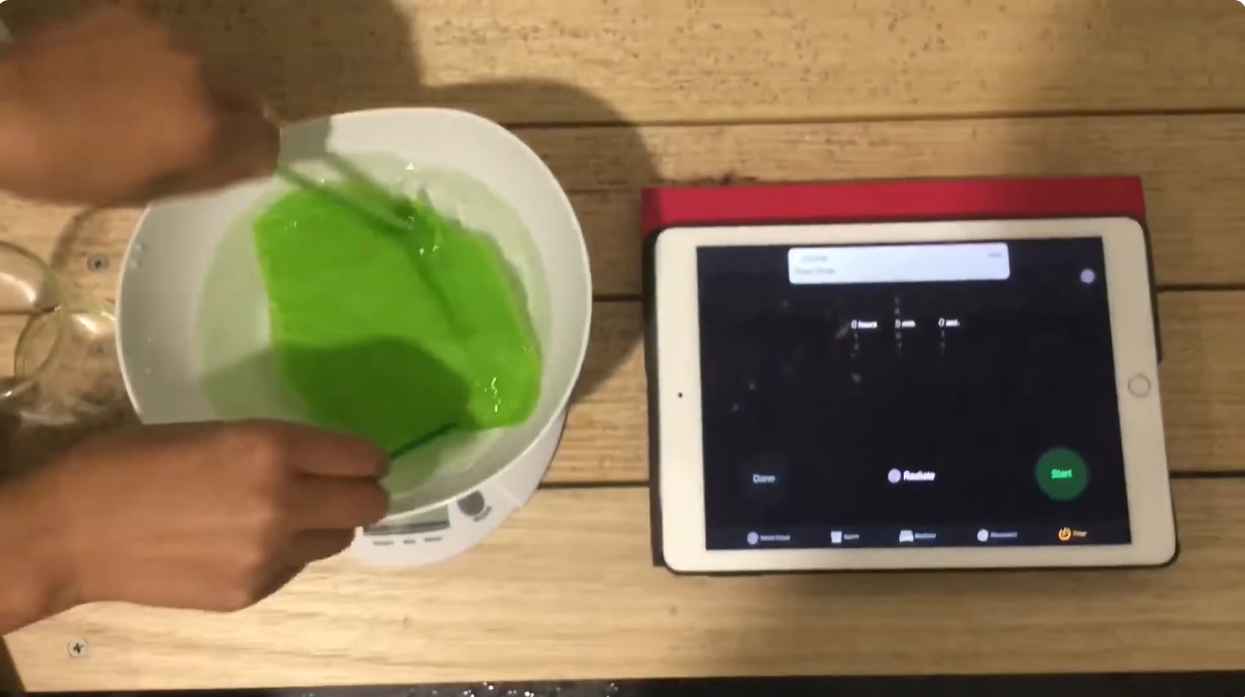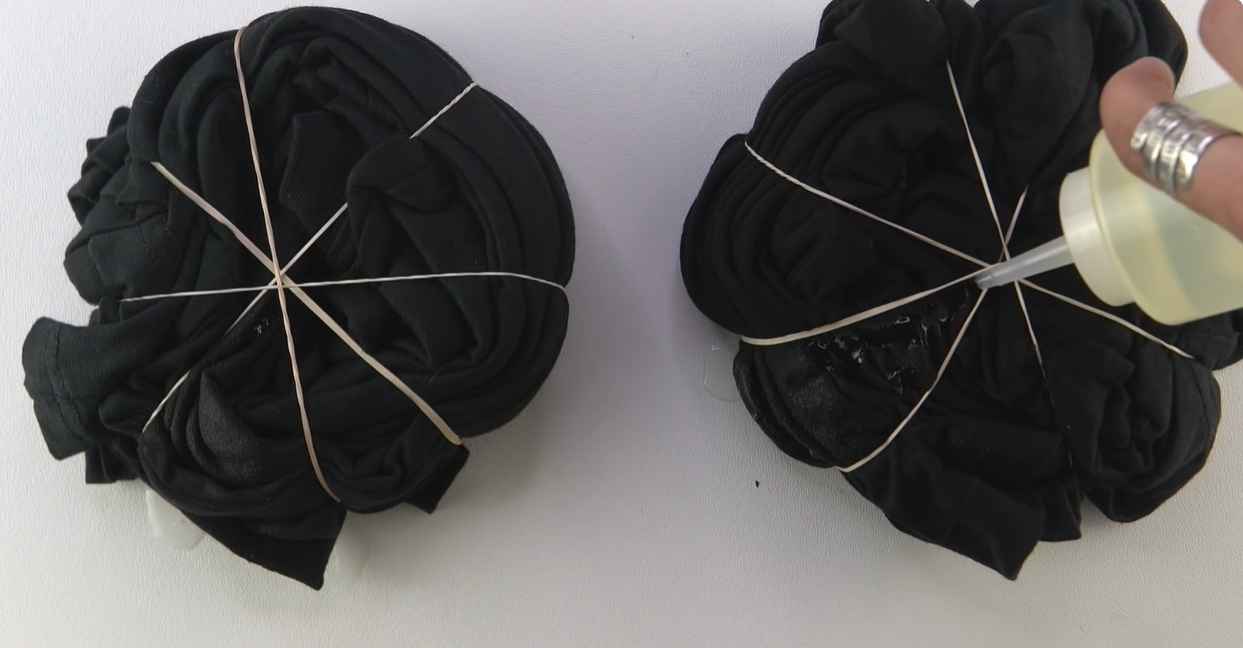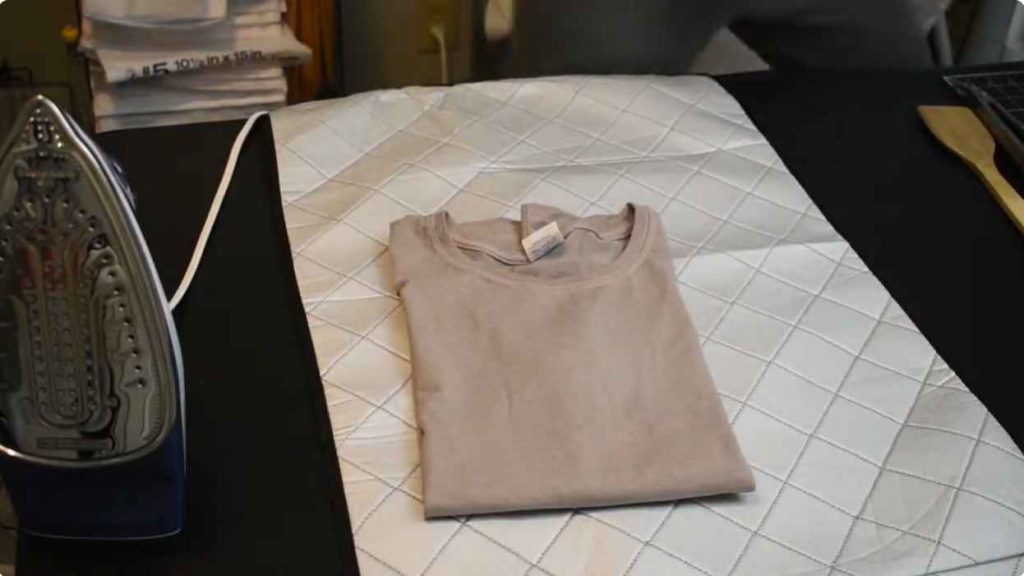Yes, you can Tie Dye 50 Cotton 50 Polyester blend, but the colors may appear more muted than on 100% cotton. The polyester content in the fabric resists dye to some extent, impacting the vibrancy.
Dyeing a blend of cotton and polyester offers a unique challenge to craft enthusiasts and DIYers. The process requires a careful balance because cotton and polyester fibers absorb dye differently.
While cotton readily takes up the dye, resulting in bright and saturated colors, polyester is less absorbent, which often leads to softer hues.
This mixed fabric, therefore, is ideal for those seeking a vintage or pastel look in their tie-dye projects.
To achieve the best results, selecting the right type of dye and adjusting the dyeing process to accommodate the blend’s particular dyeing characteristics is essential.
Patience and experimentation may be necessary to perfect your technique and attain the desired outcome.
Tie-dye Basics

Ignite your creativity with the vibrant world of tie-dye! Whether you’re a seasoned pro or trying this colorful art for the first time, there’s something magical about transforming plain fabric into a swirling spectacle of color.
We’ll uncover the exciting process of tie-dying a 50% cotton 50% polyester blend and the materials you’ll need to get started. Mastering the nature of your fabric is key to achieving dazzling results. Let’s dig in!
Materials Needed For Tie-dye
Gather your supplies and prepare the stage for your tie-dye adventure. Here’s a list of essentials:
- Rubber bands – to secure your fabric folds.
- Dye – specially formulated for fabric blends.
- Gloves – keep your hands clean and dye-free.
- Plastic squeeze bottles – for precise dye application.
- Plastic table cover – to protect your work surface.
- Washable marker – to mark your design before dyeing.
- Bucket or sink – for soaking and rinsing.
Now, with all the materials at hand, you are ready to create stunning patterns and make your fabric come alive.
Comprehending Fabric Blends
Fabric type matters in tie-dye. A 50 cotton 50 polyester blend has distinct characteristics:
| Cotton | Polyester |
|---|---|
| Absorbs dye well | Less dye absorption |
| Soft and comfortable | Durable and wrinkle-resistant |
| Produces vibrant colors | Might give pastel hues |
With a 50/50 blend, colors will be moderately vibrant, combining cotton’s absorbency and polyester’s strength. Mastering your fabric’s reaction to dye ensures a successful tie-dye experience. Armed with this knowledge, go ahead and make a masterpiece that’s half science, half art, and completely fabulous.
Pros And Cons Of Blended Fabrics

Cotton and polyester blends combine two materials into one fabric. These fabrics offer unique benefits. But they have some challenges too, especially in tie-dye projects.
Advantages Of 50/50 Blends
These blends bring together the best of both worlds. Cotton’s comfort merges with polyester’s durability. Here are the pros of using 50% cotton and 50% polyester fabric:
- Soft feel: They remain comfortable like pure cotton.
- Less wrinkling: Polyester helps reduce creases.
- Quick drying: They dry faster than all-cotton fabrics.
- Durable: Polyester adds strength for longer wear.
- Keeps shape: The fabric is less likely to shrink or stretch.
Drawbacks For Tie-dye Projects
The beauty of tie-dye hinges on how the dye adheres to fabric. Blended fabrics can pose some issues:
- Uneven dye uptake: Cotton and polyester absorb dyes differently.
- Faded colors: Polyester may not hold vibrant dye well, leading to paler designs.
- Complicated process: Special dyes or methods may be needed for best results.
Fabric Absorption
When diving into the world of tie-dye, fabric composition plays a crucial role in the result. Absorption determines how well the dye will take to the fabric and ultimately, the vibrancy of the tie-dye patterns. A blend of 50% cotton and 50% polyester requires special attention to achieve that perfect swirl of colors.
Cotton Vs. Polyester Dye Uptake
Cotton is a natural fiber known for its dye-friendly properties. It absorbs liquids and dyes like a sponge, resulting in bright, deep colors. On the other hand, polyester is a synthetic fiber.
It resists dye, often leading to lighter shades. The two fabric types have very different attitudes towards dye, which affects your tie-dye results.
How Blends Affect Color Vibrancy
With a 50 cotton 50 polyester blend, you’re dealing with a tug-of-war between absorption and resistance. This mixture impacts the range and intensity of hues on your fabric. Here’s what you can expect.
- Muted tones since the polyester won’t absorb as much dye
- A marbled effect because cotton and polyester absorb differently
- Longer soaking time necessary for more vibrant color pick-up
To sum up, tie-dye on a 50/50 blend won’t turn out as bright as pure cotton. But, with patience and the right technique, you can still achieve a range of beautiful, pastel-like effects.

Prepping Your Blend For Tie-dye
Excitement bubbles when you dig into the world of tie-dye. Especially with a 50 cotton 50 polyester blend, your canvas is unique. But first, you need to prepare the fabric properly. Crafting that perfect swirl of vibrant colors begins with ‘Prepping Your Blend for Tie-Dye’.
Let’s ensure you start on the right foot. We’ll walk through washing and preparing the fabric, then move on to applying the base color.
Washing And Preparing The Fabric
Begin with a clean slate by washing your cotton-polyester blend. This step removes oils, dirt, and any sizing, which is important for dye absorption. Use a mild detergent and avoid fabric softeners that could block dye uptake. Once washed, keep the fabric damp. A damp fabric takes dye better.
- Wash without fabric softener
- Leave the fabric damp post-wash
- Ensure it’s untangled to avoid uneven dyeing
The damp fabric allows colors to spread smoothly. Be sure your item is wrinkle-free for an even pattern outcome. Now ready, your fabric eagerly awaits its vivid transformation.
Applying The Base Color
For a 50/50 blend, picking the right dye is important. Some dyes work better on natural fibers, others on synthetic. Get a dye that works well with both. Start by preparing the dye solution as per instructions.
- Mix dye with the correct water ratio
- Dissolve the dye fully before use
- Apply evenly for consistent coverage
Slowly soak the fabric in the dye, ensuring even coverage. Watch as the fabric begins to absorb the vibrant hues. Once applied, cover the fabric to keep it damp.
The longer the dye sets, the deeper the color penetrates. After the directed time, rinse the fabric until the water runs clear. Your base color is now set, a perfect canvas for more intricate designs.
Note: Test your dye on a small piece first. This helps avoid any surprises. Now, you’re set to elevate your blend with the beauty of tie-dye!
Tie-dye Techniques And Patterns
Starting on a tie-dye adventure invites a splash of color onto the canvas of our clothes. 50 cotton 50 polyester fabric presents a unique blending ground for ingenuity in tie-dye.
Experimenting with varied techniques and patterns unlocks a world of vibrant possibilities. Captivate your wardrobe’s essence by infusing it with personalized flair through tie-dye.

Creating Classic Patterns On Blended Fabric
Blended fabrics require a unique approach for tie-dye. The mix of cotton and polyester can influence dye uptake. Essential steps ensure vivid patterns emerge on 50/50 garments:
- Prepare the fabric by washing it minus fabric softener.
- Soak the material in a soda ash solution for enhanced dye adherence.
- Mix chosen dyes according to instructions for optimal color richness.
Classic patterns range from spiral to bullseye.
- To spiral: pinch the fabric center, twist it into a disc, and bind it with rubber bands.
- For bullseye: pick a point, pull up, secure with bands at intervals.
Apply dye along sections for a well-defined outcome. Let the dyed fabric set, then rinse, wash, and dry.
Innovative Folding And Twisting Methods
Going beyond basics lifts tie-dye to artistic heights. Explore innovative folding and twisting methods for awe-inspiring results:
- Accordion fold for sharp lines, then apply dye in stripes.
- Use marbles or stones beneath the fabric, secure with bands, for unique patterns.
- The Scrunch method offers a random, crinkled effect.
Manipulate the fabric fearlessly. Play with angles during folding for geometric surprises. Diverse twisting methods bring out unexpected design twists.
For a detailed design, apply the dye with a squeeze bottle. This offers control for intricate patterns. After dye application, let creativity seep in during the fabric’s curing period.
Choosing The Right Dye
Deciding on the right dye for a 50 cotton 50 polyester blend is key. Not all dyes work the same on different fabrics. The outcome depends on fabric types and the dyes used.
Want vibrant colors on your cotton-poly blend? Select the correct dye. Let’s learn which dyes work best.
Best Dyes For Cotton-polyester
Blend fabrics need special dyes. Ideal dyes penetrate both fibers. Fiber-reactive dyes suit cotton. Polyester needs dispersed dyes. For mixed fabrics, a dye that works on both is essential.
- All-purpose dyes – Common choice, affordably colors both fibers
- Rit DyeMore – Specially formulated for synthetics, works on blends
Natural Vs. Synthetic Dyes
Dyes come from natural sources or are man-made. Each has benefits.
Natural dyes are eco-friendly. They come from plants and minerals. They work well on cotton but not as well on polyester.
Synthetic dyes, made in labs, are designed for specific fabrics. They offer vibrant, lasting colors on synthetic fibers like polyester.
| Fabric Type | Natural Dyes | Synthetic Dyes |
|---|---|---|
| Cotton | Good | Varies |
| Polyester | Poor | Excellent |
| Cotton-Poly Blend | Fair | Good to Excellent |
Select dyes keeping in mind the fabric and results desired. Use the table as a guide to start your tie-dye adventure right.
Dye Application Tips
Craving a splash of color on your favorite blend of fabric? Whether a seasoned pro or a dyeing novice, these tips ensure vivid and long-lasting results when tie-dyeing your 50% cotton, and 50% polyester garments.

Even applications on Blended Fabrics
Cotton and polyester blends can be tricky. With these fabrics, even dye application is key to a stunning result.
- Saturate each section thoroughly to allow dye penetration.
- Use a squeeze bottle for precise control over dye placement.
- Tie rubber bands tightly, but not too tight to restrict dye flow.
- A brush or sponge can help spread the color evenly on thick fabrics.
Temperature And Time Considerations
Temperature plays a pivotal role in dye fixation. The magic happens with heat.
- Heat water to 140°F (60°C) for dyeing.
- Keep dyed fabric warm while it sets for the best absorption.
- Wait 24 hours before rinsing for vibrant colors.
Finishing Touches
Starting on a tie-dye project can be exciting, especially when working with a cotton-polyester blend. The Finishing Touches are important for the longevity and vibrancy of your creation.
With the right techniques, you can set the colors and ensure your design stays bright after multiple washes.
Setting The Dye On Mixed Fabrics
Once you’ve unleashed your creativity with swirls and splashes of color, it’s time to set the dye. This ensures your tie-dye masterpiece remains brilliant and resists fading. Here’s a simple method to lock in those hues:
- Prepare a fixative solution: Mix one part white vinegar with four parts cold water.
- Soak the fabric: Submerge your dyed garment in the mixture for 30 minutes.
- Rinse thoroughly: Use cold water to wash out any excess vinegar and dye.
- Dry carefully: Lay the item flat or hang it to air dry.
Washing And Care Post-dyeing
To maintain the dazzling display of colors, follow these easy washing instructions:
| Step | Action |
|---|---|
| 1. Wait for the Right Time | Let the dye set for at least 24 hours before washing. |
| 2. Separate Your Laundry | Wash the tie-dye item alone to avoid color transfer. |
| 3. Choose the Correct Water Temperature | Use cold water to prevent the dye from bleeding. |
| 4. Pick the Right Detergent | Opt for a mild detergent designed for colored fabrics. |
| 5. Dry Thoughtfully | Avoid high heat; air dry or use a low heat setting. |
Remember, tie-dye is an art form, and your 50% cotton, 50% polyester fabric blend offers a unique canvas. With these final care touches, you’ll ensure your artwork remains as vibrant as your first day of creation. Wear it with pride!
Showcase And Inspiration
Tie-dyeing is not just for 100% cotton anymore. Creative makers are now transforming 50% cotton and 50% polyester blends into colorful masterpieces.
The result? Vibrant, lasting patterns that stand out in any wardrobe. Let’s dig into some successful projects and tips for expanding your tie-dye techniques.
Successful 50/50 Tie-dye Projects
Whether you’re a beginner or a seasoned artist, a 50/50 cotton-polyester mix can yield stunning results. The synthetic fibers in polyester hold vibrant dye colors differently than cotton, creating a unique look.
- Swirling Rainbows: Spirals of bright colors pop against the fabric’s heathered texture.
- Electrifying Ombre: Seamless gradients showcase the dye’s ability to blend on mixed materials.
- Galactic Patterns: Dark backgrounds with bursts of neon mimic starry night skies.
These projects illustrate the potential for variety and brilliance in your tie-dye adventures.
Expanding Your Tie-dye Repertoire
Ready to level up your tie-dye skills? A mixed fabric like a 50/50 cotton/polyester blend is your canvas for exploration. Here are some techniques to try:
- Ice Dyeing: Sprinkle dye powder over ice on your fabric for a watercolor effect.
- Bullseye Technique: Create concentric circles for that classic tie-dye target look.
- Reverse Tie-Dye: Use bleach to remove color before adding new hues.
Experiment with different folds, twists, and tying methods. Mix and match colors boldly. Your creations will inspire others to try their hand at this versatile craft!
Frequently Asked Questions For Can You Tie Dye 50 Cotton 50 Polyester
What Dye To Use On Cotton Polyester Blend?
For dyeing a cotton-polyester blend, use a dye that works on both fibers, such as Rit DyeMore, for vibrant, lasting color. Pre-wash the fabric and follow the instructions carefully for the best results.
Will 50% Cotton 50% Polyester Bleach?
A 50% cotton and 50% polyester blend can bleach, but the result may be less vivid than 100% cotton. Use a color-safe bleach and test a small area first.
What material is 50 cotton 50 polyester?
Suggests an inquiry into the composition of a fabric blend commonly used in clothing. This combination of cotton and polyester creates a fabric that combines the natural comfort of cotton with the durability and wrinkle resistance of polyester, making it a popular choice for a variety of apparel.
Can You Tie Dye A Shirt That Is Not 100 Cotton?
Yes, you can tie-dye shirts that are not 100% cotton. However, the best results occur on natural fibers, and blends may yield a less vibrant design. Opt for materials like silk, rayon, or linen for alternative results.
Can You Use Rit Dye On 50% Polyester?
Yes, you can use Rit dye on fabrics with up to 50% polyester content but expect lighter shades than with natural fibers. Pre-dissolving the dye in hot water can help achieve better results.
Conclusion
Starting on a tie-dye project with a 50 cotton 50 polyester blend is indeed possible. By choosing the right dyes and applying heat, vibrant creations emerge. Remember to experiment and adopt the fabric’s unique qualities. Happy dyeing!

